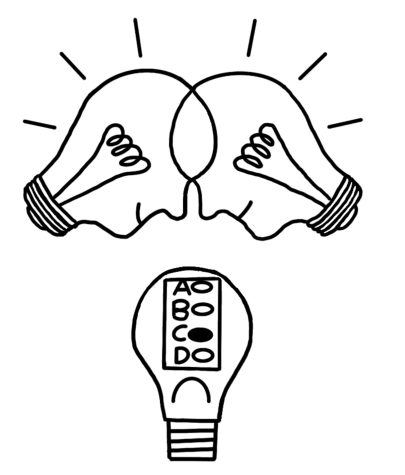Collaboration: It’s what we need to talk about in education
March 7, 2023
It has been over 100 years since the school system changed its method of determining students’ comprehension, understanding and application skills of content taught in school. As time has gone on, education has increasingly become based on high stakes tests and independent performance, rather than collaboration, a skill that is significantly more valuable than knowing how to fill in a bubble. It’s time to get up to speed; collaboration must become the focus of learning and comprehension, as it fosters critical thinking, problem solving skills, a deeper understanding of material and better prepares students for their future.
According to History.com, during the late 1800s, schooling was mandated for minors for the purpose of young people being able to sit in straight lines, do as they’re told and complete simple tasks to be able to work newly invented machinery during the industrial revolution. Nearly two centuries later, job opportunities and disparities in the workplace, with people working from home, abroad and more, have never been more different. However, despite this workplace revolution, the school curriculum still uses the same practices of training for factory positions, making students increasingly frustrated with how they are taught and how their academic abilities are determined.
According to a February 2022 Bark survey, 74 percent of students agree that teaching and testing are mostly based on memorization versus an actual understanding of the subject. With the overwhelming majority of students on the receiving end of modern education voicing their frustration of tests, one can only wonder what the solution is. Collaborative based learning answers the call.

According to a 2012 research study published by Procedia-Social and Behavioral Sciences, collaborative learning has a significant impact on a student’s academic achievement. The use of collaborative learning in the classroom can create a more engaging and stimulating learning environment, allowing students to take an active role in their own education. Additionally, collaborative learning promotes social, emotional and cognitive development, helping students to better understand and process difficult concepts.
Collaborative learning can also promote greater student engagement and motivation, as students are encouraged to work together to discuss and solve complex problems. In a 2014 study done by researchers at the University of Washington, results show that students who are taught and evaluated by tests are 1.5 times more likely to fail compared to students participating in a collaborative based learning environment. Additionally, collaborative learning leads to an increase in grade performance of half a letter grade or more compared to the grades of students who are evaluated by tests.
On the other hand, many individuals argue that tests are used because they can reveal student improvement over time and promote progress in information recall. Tests are a way to compare student performance across classes, grade levels and even districts. This is precisely the problem though. Not everyone performs the same under various conditions, and each student has different learning styles. To administer the same test under synonymous conditions to every student and judge them based on their scores is ineffective and outdated. There is never one right answer to a problem, a message that collaborative learning embodies and preaches.
This method also models the ever-changing workforce right now, focusing more on collaboration. Big name companies such as Netflix are using policies such as mandatory team bonding that encourage employees to work together to develop innovative solutions, which adds to the feeling of accomplishment among employees. This collaborative approach to work, also encourages employees to engage more actively with their colleagues, creating a greater sense of connectedness and community.
Schools have started to make the shift towards collaborative based learning, too. Marin Academy (MA), a private school based in San Rafael, has shifted their focus from heavy testing to “providing a challenging academic program based on experiential education that focuses on the critical and creative thinking our students need to chart their course in the world.” MA has recently employed a new technique of student interaction called the Jigsaw technique, a process where students break into small groups, attempt to tackle tasks together and then regroup as a class to converse upon their findings and exchange information. The results of the technique reveal students with heightened critical thinking skills, more confidence in the material they are learning and a sense of worth beyond a letter grade earned on a test. Such practices are also being utilized at the collegiate level.
To truly reach the heart of each individual student and ensure the understanding of material taught in school, teachers must move towards collaborative learning, both for the sake of current students’ lives and their future careers. But, the education system must also introduce a trial and error type system to understand which methods truly work for both the student and the teacher. One thing is for sure, however: these tests must be forgotten. Take it from Frederick J. Kelly, the man who invented tests in the first place: “These tests are too crude to be used and should be abandoned.”







